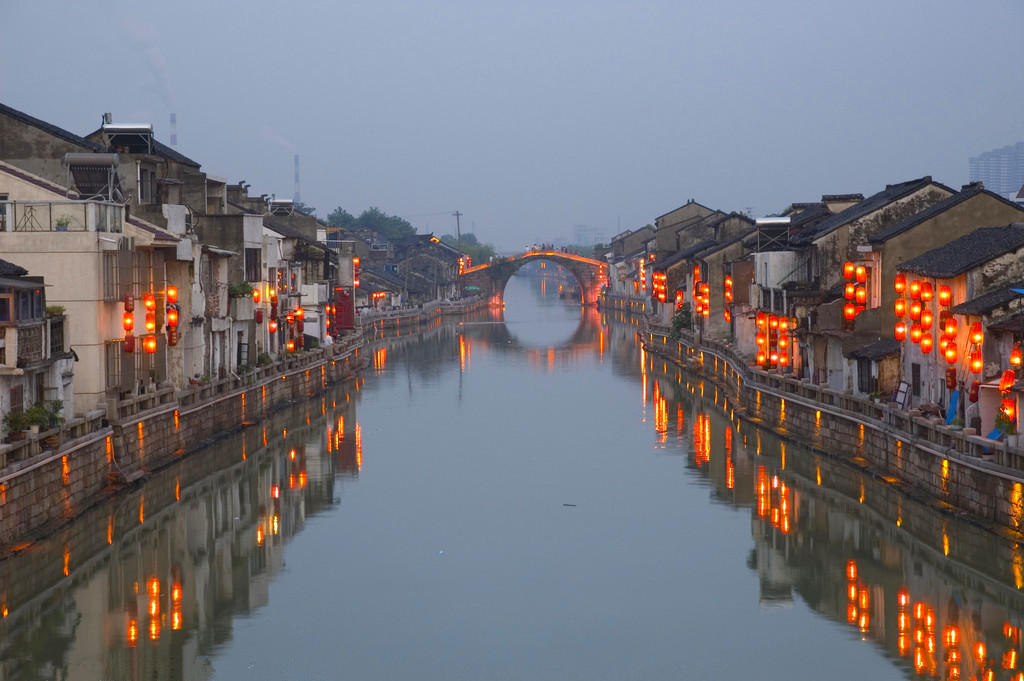Advancements in cultural heritage protection hailed

The Grand Canal is a vast waterway system in the north-eastern and central-eastern plains of China, running from Beijing in the north to Zhejiang province in the south. It was put on world heritage list in 2014.
Officials celebrated the International Day for Monuments and Sites on April 18 by highlighting the achievements made in the three decades that have passed since China joined the Convention Concerning the Protection of World Cultural and Natural Heritage.
“The initiation and development of world heritage work represent China’s progress in the research and protection of cultural heritage,” said Guo Zhan, former vice-chairman of the International Council on Monuments and Sites (ICOMOS) and vice-chairman of the ICOMOS China.
The past 30 years have been a time of increasing connection and integration between world heritage protection and efforts to conserve Chinese cultural heritage, Guo said. In the process, Chinese cultural heritage protection has advanced by leaps and bounds, making China a driving force behind protection of world heritage.
Changes in the concept
In 2014, the Grand Canal and the Silk Road were added to the World Heritage List, making China second in terms of the number of world heritage sites, with a total of 47. What is more important is the changing opinions in this respect, said scholars.
“People have realized that Chinese cultural heritage is part of the heritage of all mankind,” said Wang Wei, director of the Institute of Archaeology at the Chinese Academy of Social Sciences (CASS).
Moreover, new categories have been explored, such as cultural landscapes, routes and intangible cultural heritage, and the concept of cultural heritage has expanded to include everything that has existed throughout all historical periods of human civilization.
China has advanced from the stage of “cultural relic protection” to “cultural heritage protection,” Guo said. In addition to static historical sites like the Imperial Palace and the Great Wall, cultural landscapes like the Honghe Hani Rice Terraces that combine static and dynamic, tangible and intangible features should also be placed under protection.
Also, China has worked hard on practices and enhanced its ability to protect cultural heritage.
International outreach
In addition to tremendous changes at home, China has also had significant influence on international cultural heritage protection.
“China has contributed new varieties of world heritage,” Guo said. “For instance, Mount Tai of China was inscribed into the World Heritage List as a cultural and natural site, the first of its kind.”
Wang Wei said researchers and conservationists are paying attention to heritage protection around the world.
“Take archaeology for example. Facilities, technologies and methods represented by the Institute of Archaeology of CASS have reached the advanced global level,” Wang said.
Formerly, archaeological workers from other countries came to China, but today, increasing numbers of Chinese archaeologists are venturing outside. They are active in cultural sites in Kenya, Vietnam and many other nations, Wang added. He said that the Institute of Archaeology of CASS plans to excavate Mayan sites this year. “We are entering the birthplace of a major world civilization.”
In light of improving cultural heritage protection capacity, China, once a receiver of international assistance in this field, is now capable of providing technical assistance to other nations in need. For instance, it joined the international efforts to protect and restore Angkor Wat in Cambodia.
Guo pointed out that China has also made progress in participating in the discussion on protective concepts and the formulation of protection rules. Chinese and foreign scholars together drafted the 2007 Beijing Document about the principle of authenticity, which provided a reference not only for East Asia but also the rest of the world.
Government responsibility
Chinese cultural heritage protection has made remarkable achievements, but many challenges still remain. The problems of overemphasis on application and an ignorance of management have long been criticized.
Liu Shuguang, head of the China Cultural Heritage Protection Research Institute, pointed out that it is essential to define clear responsibilities of governments at all levels and ensure the supervision of administrative authorities over cultural relics. Departments of cultural relics should make it a top priority to fulfill promises made during the application for heritage status and undertake monitoring in accordance with the World Heritage Convention.
For a long time, unclear and inconsistent monitoring standards have added difficulty to world heritage monitoring. “Monitoring is a matter of extreme urgency,” Liu said.
To address the problem, Liu suggests administrative authorities of cultural relics make specific guidelines and mandatory measures as soon as possible and construct a model of a heritage site subsystem as part of a monitoring and warning system. It is also important to promulgate and popularize monitoring data specifications and a computer code standard in the system to establish an industry standard and regulation in this area as soon as possible, he added.
